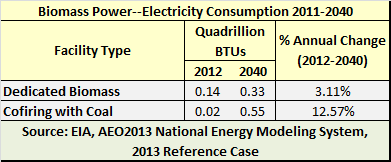
Growth in Georgia
Rollcast Energy Inc. recently opened the doors of its Piedmont Green Power facility. Located in Barnesville, the 53.5 megawatt dedicated wood biopower plant is set—when fully operational—to generate enough electricity to power 40,000 homes. Georgia Power Co., a subsidiary of Southern Co., holds a long-term contract to buy the power generated by the facility. In addition to Piedmont Green, Rollcast has plans to build another biomass power plant in LaGrange starting in the spring of 2013.
Green Power Solutions is also getting in on the action. The company has plans to start construction on what will become Georgia’s largest renewable energy facility to date. Its planned 56 megawatt plant is under construction at the site of an existing paper mill; it is expected to use upwards of one million tons of wood biomass each year. Per a long-term agreement, Georgia Power will also purchase the power generated by this plant. Construction will begin in May of 2013.
Trouble in Texas
Despite the growth in Georgia, there is a lesson to be learned in Texas. Here, the nation’s largest wood biomass plant - at 100-megawatts – sits idle. The Nacogdoches Generating Facility, which opened for production this past July, produced power only through September. Southern Power, also a subsidiary of Southern Co., owns the plant.
Austin Energy holds a purchase agreement to buy the power the plant produces, but only when economical. The municipal utility pays approximately nine cents per kilowatt-hour (Kwh) to buy commercial power from the plant. However, the historically low cost of natural gas has contributed to wholesale prices that currently range from three to four cents per Kwh. The plant is expected to ramp up operations when energy usage picks up in warmer months. A more robust economic recovery increases demand for electricity or higher natural gas prices will also improve the facilities run rate. (For more information about the relationship between natural gas and bioenergy, read Suz-Anne Kinney’s post on Wood Bioenergy and Natural Gas Prices.)
The Future of Biomass
Georgia Power and Austin Energy have long-range plans to realize more power generation from renewable energy sources. By 2015, Georgia Power plans to obtain 250 megawatts of renewable-sourced power. The new Rollcast Energy plant in LaGrange and the Green Power Solutions’ plant are part of that plan. Both are expected to begin producing commercial power in 2015.
Austin Energy’s plan extends through 2020. The utility has set the goal to realize 35 percent of its electricity generation from renewable sources, including biomass, wind and solar. A 20-year contract is in place for Austin Energy to buy the energy generated by the Nacogdoches plant. Supply and demand factors are not supporting full operations now, but this could easily change as demand for electricity and the supply dynamics of all energy sources shift. After all, one of the benefits of biomass power is that, unlike wind and solar, it is an on-demand source of electricity.
Energy forecasts like the one issued annually by the EIA are well-known for being inaccurate. No matter how good the model, any number of events over the 28-year period of the forecast could produce radically different results. In light of recent industry events, however, the EIA’s outlook appears reasonable: modest growth in dedicated biomass and strong growth in co-firing.
Comments
Wood-Fuel Prices in US South Continue to Fall | F2
12-14-2012
[...] ← The Future for Wood Biomass Power Generation [...]


 Suz-Anne Kinney
Suz-Anne Kinney


